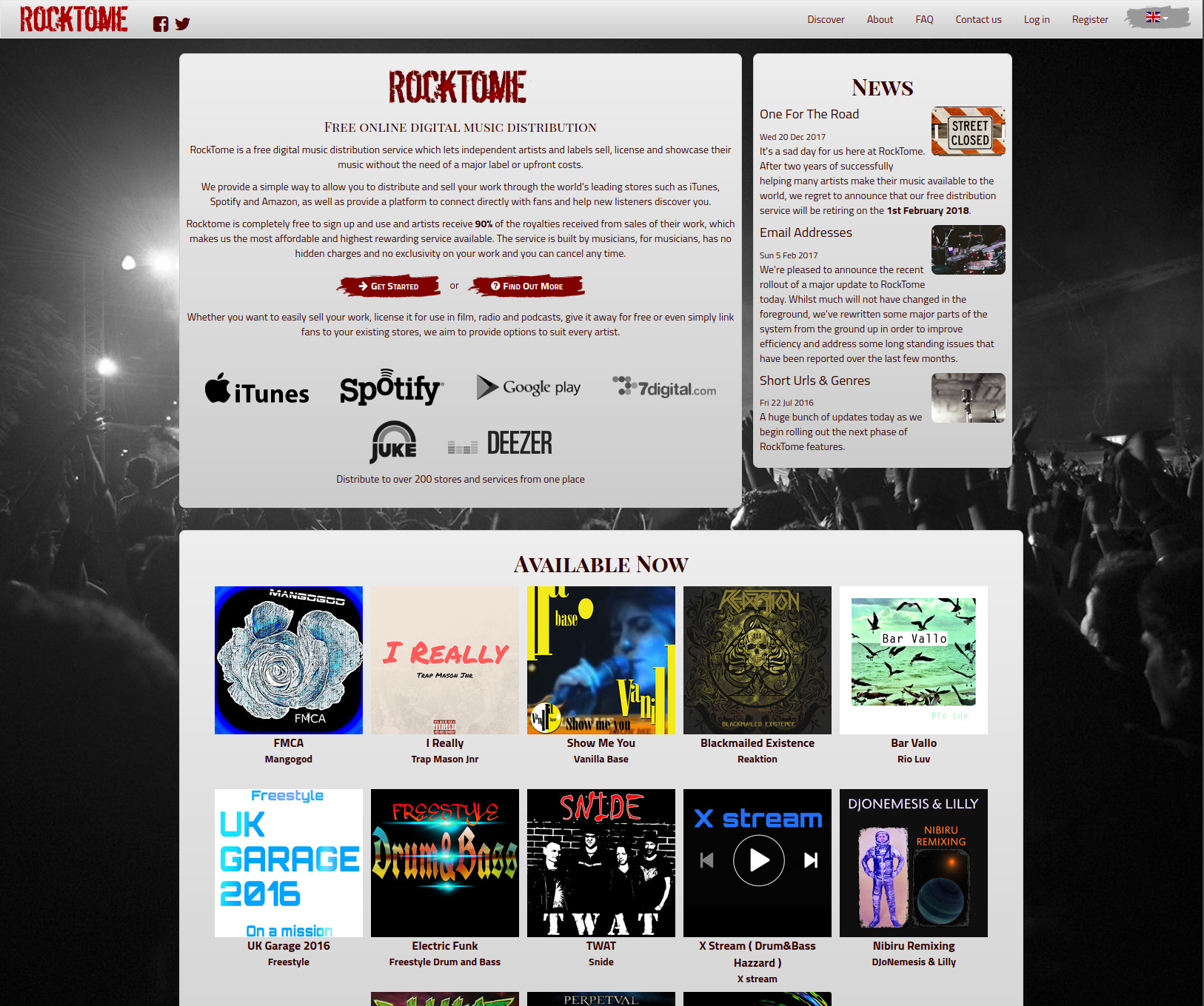Case Study: The Automated Music Publishing Website
The Challenge
Build a lightweight web application that would allow musical artists and labels to register and upload their music to be processed and published on digital platforms, with a backend that would handle the preparation of this music and delivery to multiple partner platforms.
The Story
We were approached by a record label with an idea to initially develop an application to automate the process of preparing digital music and accompanying imagery and metadata into it's appropriate formats, and to facilitate the automatic delivery of this to various partner systems for release on popular digital platforms such as Spotify. During the course of investigating the requirements it was also determined that there was potential for a customer facing aspect to the service, allowing further automation of the artist acquisition and registration process by allowing musicians to sign up, create their profiles and upload their music directly on the site.
In this instance we partnered up to handle all technical aspects of the application, including a follow up desktop app to allow for processing mastered audio from additional physical sources.
What It Needed To Do
After discussing and researching in depth what we could do, the minimum viable product was determined to require:
- A backend to allow the creation and storage of artist profiles and music.
- Automated functionality to verify and process the artist music from the format provided into formats meeting the requirements of the partner systems, and to be able to automatically deliver to those platforms on a prescheduled date.
- A lightweight frontend to allow artists to register for the service, and a step by step process to allow them to easily complete the process of uploading their music.
- Private access to the backend to allow staff to add and edit data directly.
How We Went About It
The end solution we landed upon was to build a Python based backend using the Django framework. The frontend made use of Javascript to enhance the user experience during the upload process, but was deliberately kept as lightweight as possible to avoid being slow on mobile devices.
The Python backend had a series of additional background processes which would run to analyse and convert any uploaded data, and was eventually expanded to include fingerprinting in order to prevent fraudulent uploads. An additional process would also periodically run to retrieve statistics about the releases published through the application and allowed artists to log in and see how their work was performing.
The system was later expanded with the introduction of a private REST API that allowed for the development of a Windows based desktop application to automate the process of pulling audio from physical sources.

The Results
Rocktome.com successfully launched in 2016 and quickly became popular in the independent music scene, particulary in Spain. It was sunsetted in 2018 after a disagreement with the primary distribution partner resulted in an incompatibility with the business model being used, but we've successully utilised the processes and technologies learned along the way in several projects since.